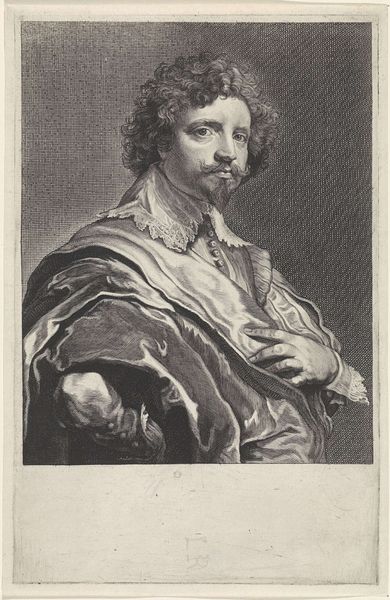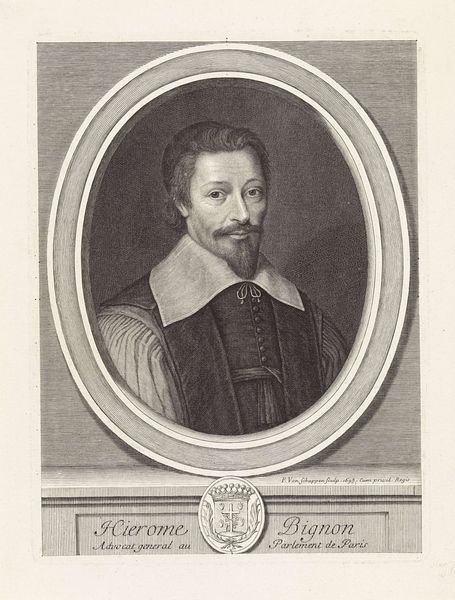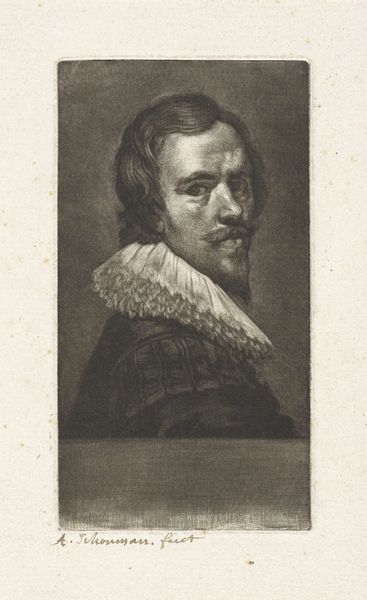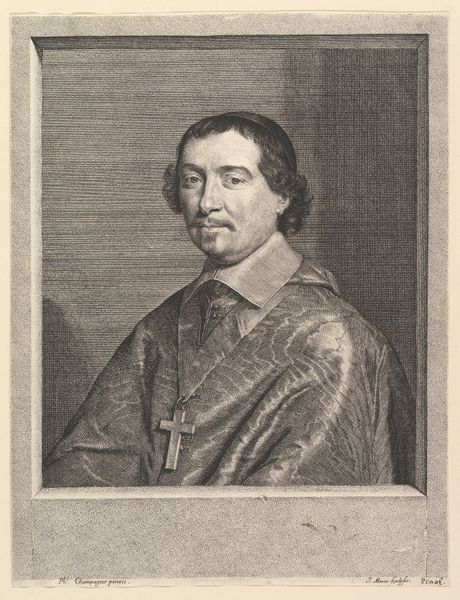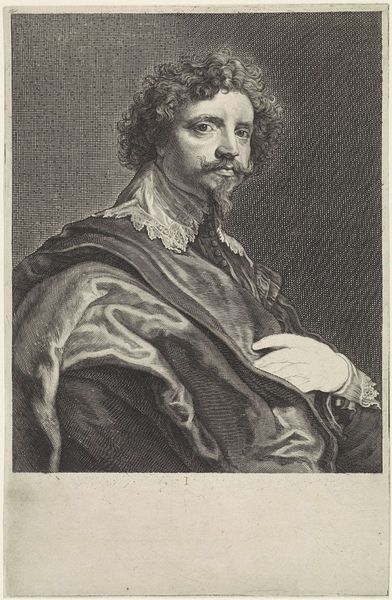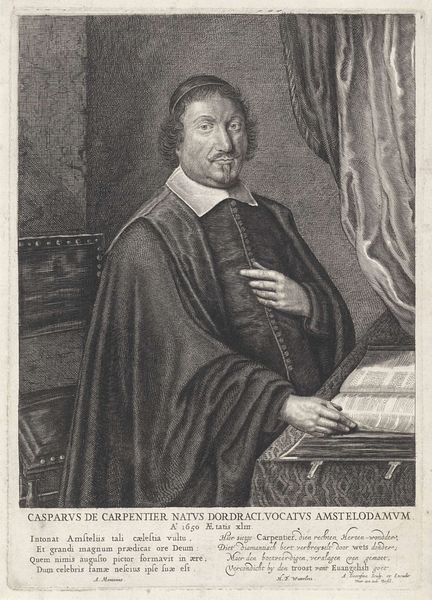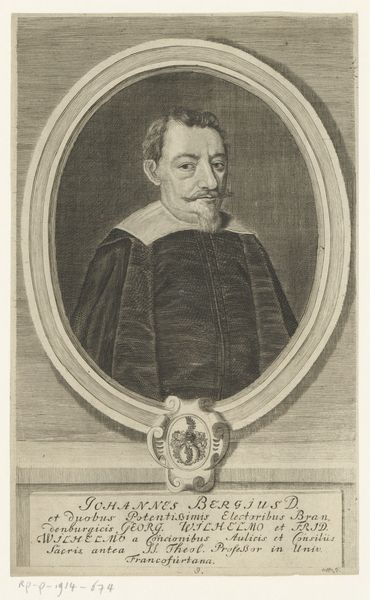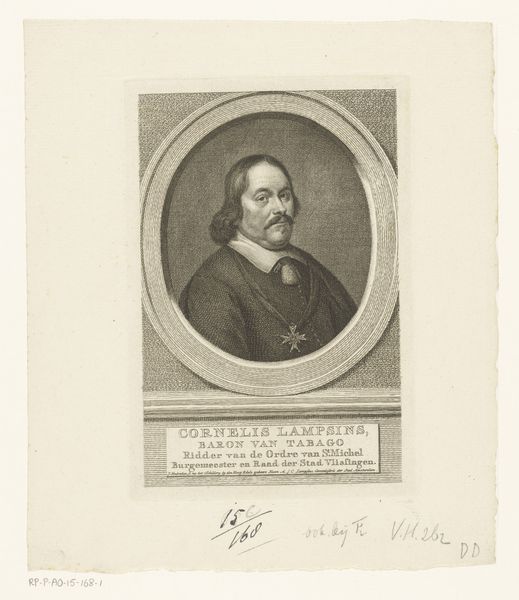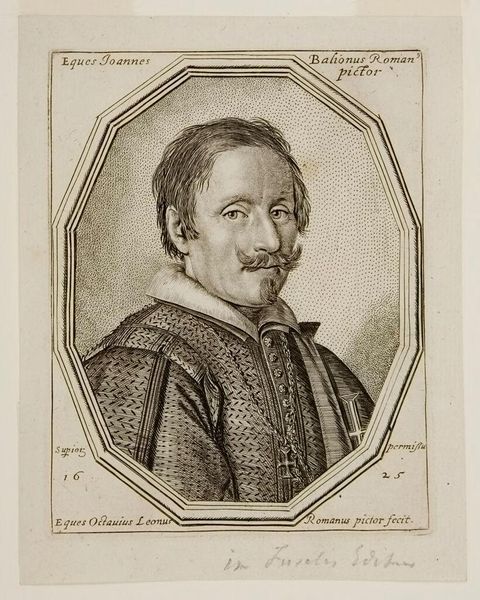
print, engraving
#
portrait
#
baroque
#
dutch-golden-age
# print
#
old engraving style
#
line
#
portrait drawing
#
engraving
Dimensions: height 237 mm, width 161 mm
Copyright: Rijks Museum: Open Domain
Curator: Welcome. Before us, we have Lucas Vorsterman I’s "Portret van Gerard Seghers", dating roughly from 1630 to 1674. It’s currently held at the Rijksmuseum. What are your initial thoughts? Editor: There's an immediate somberness, wouldn’t you agree? The figure emerges from such a dense darkness, the detail so sharply contrasted—it’s incredibly arresting! A classic Baroque feel with this attention to light, but how does it play into its historical context? Curator: Well, the portrait offers fascinating insights into artistic labor. It is an engraving; thus, Vorsterman meticulously transferred Seghers' image onto a metal plate through skilled handwork, indicative of printmaking traditions in the Dutch Golden Age. Consider, too, how this print form allowed for wider distribution and consumption. This was a way of creating artistic celebrity. Editor: Absolutely! And it’s achieved so masterfully! Look at the line work, the sheer density of marks to create depth. It speaks to the engraver's mastery. Semiotically, the shadows aren't merely absences of light. They create volume. See how they delineate the luxurious folds of his robe... signaling status. The gaze itself…intense! Curator: Precisely, it also begs the question: How did Vorsterman conceive artistic value and legacy by memorializing fellow artists like Seghers through prints? Was this simply commissioned or perhaps for posterity—to circulate images and consolidate reputations? Editor: That's right. The material considerations become so significant, especially given the collaborative effort between the artist and printer. And the way the formal choices emphasize wealth and status – the robe, the ornament around the neck - all reinforced through Vorsterman's expert technique. Curator: Exactly. The text below the image tells us this artwork is designed "to inspire the world". Considering social status, artistry, skill, technique, and its place and role within society: Vorsterman here gives us far more than just the depiction of a man. Editor: I agree. Looking closely reveals a dialogue between artistry and historical materiality. A potent rendering.
Comments
No comments
Be the first to comment and join the conversation on the ultimate creative platform.
